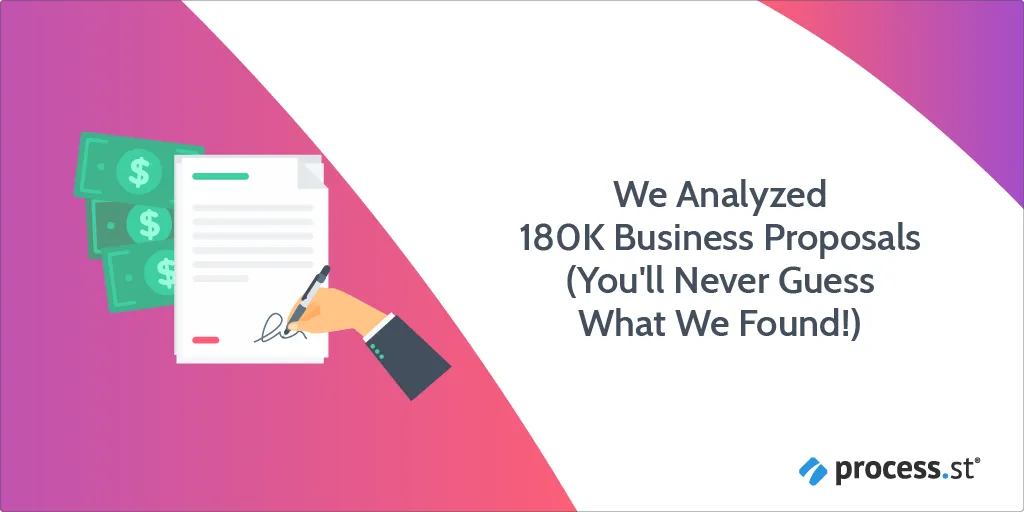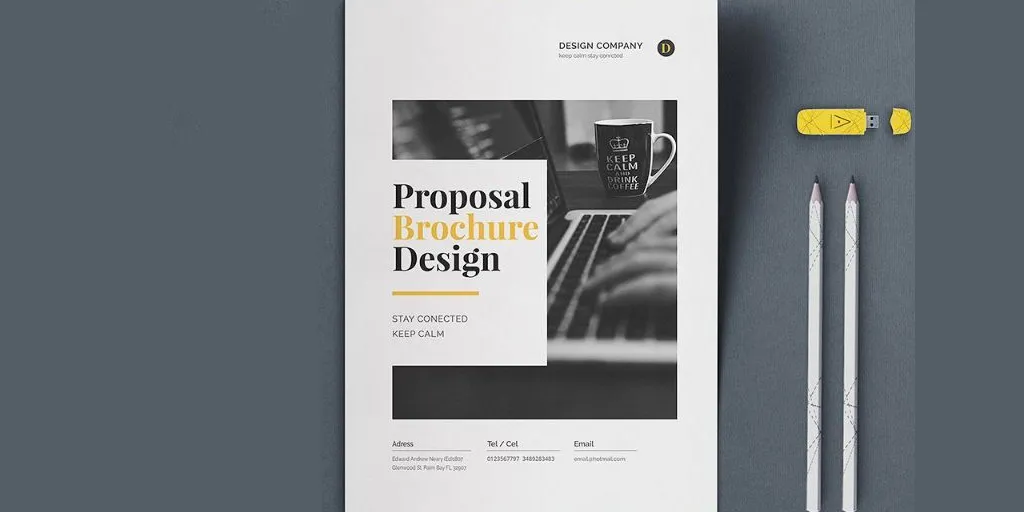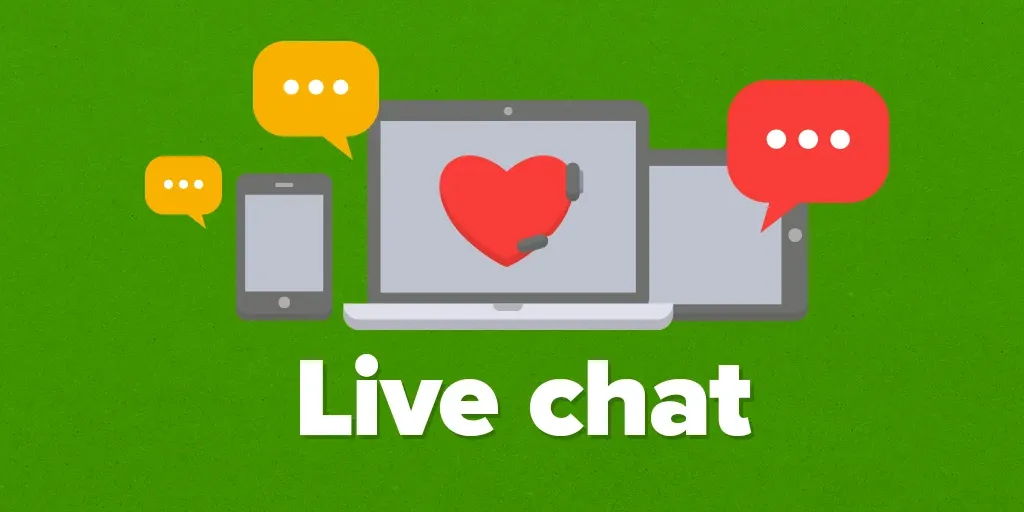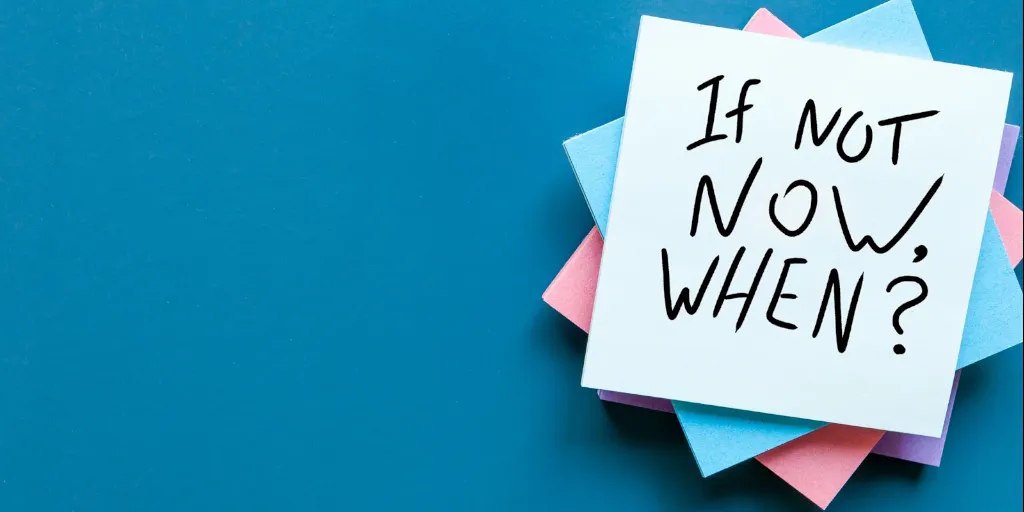We Analyzed 180K Business Proposals (You’ll Never Guess What We Found!)
Blog: The Process Street Blog

This is a guest post by Adam Hempenstall, who is the CEO and Founder of Better Proposals – simple proposal software for creating beautiful, high-impact proposals in minutes. Having helped his customers win $500,000,000 in the last 12 months alone, he’s launched the first Proposal University where he shares best practices on writing and designing proposals.
A great business proposal means the difference between an unsigned contract and a successful deal. A poorly written business proposal will get turned down, even if the offer is good.
Business proposals are considered to be an art form that only the extremely skilled can write.
However, after analyzing over 189,000 successful business proposals, I can tell you that there’s no secret to writing a great proposal.
Allow me to elaborate as I take you through our analysis findings, and run through the following topics, in this Process Street post:
- What is a business proposal & how do you create one?
- Business proposal finding #1: Visuals matter
- Business proposal finding #2: Video makes no difference
- Business proposal finding #3: Live chat increases conversions
- Business proposal finding #4: A single offer is better than a package
- Business proposal finding #5: Kiss PDFs goodbye
- Business proposal finding #6: People open proposals on their phones first
- Business proposal finding #7: It doesn’t matter when you send your proposal
- Business proposal finding #8: Clients love paying directly from the proposal
- Business proposal finding #9: Length matters
- Business proposal finding #10: The title of the pricing section makes a difference
- Business proposal finding #11: Act quickly
- Business proposal finding #12: Use a template
- Key takeaways: The magic business proposal solution
Let’s get started.
What is a business proposal & how do you create one?
Business proposals are documents used by B2B companies to offer services or products to other companies. Essentially, the seller proposes a solution to the buyer’s problem in a well-structured document.
You could write a business proposal using a document authoring tool, such as Word or Google Docs, and then send it to your client via email. Or, you could use proposal software to create and send a business proposal, within one single platform.
However you decide to create your proposal, many find the proposal writing process time consuming, stressful, and incredibly competitive.
But, as we discovered in our business proposal analysis report, it doesn’t have to be.
This report is based on the analysis of more than 189,000 successful business proposals which are collectively worth over $120 million, and have all been written using free proposal templates, like this Process Street Business Proposal Template Checklist, for example:
Click here to access the Business Proposal Template Checklist!
To get this template, log in and add it to your account. Or, if you don’t yet have a Process Street account, sign up for a free trial.
Below are the key findings from this report, which you can use to write better business proposals.
Business proposal finding #1: Visuals matter
The B2B world cares about visual appearance when it comes to closing a deal. For example, Proposals with an attractive cover page tend to convert around 45% better than those without one.
A cover page is exactly what you think it is; it’s the cover of your proposal. They usually contain introductory details such as:
- Your name
- Your company name
- Proposal title
- Date
Winning proposals have cover pages that display relevant and engaging images. Without an eye-catching cover page, the reader skips straight to the most important part of the proposal. They don’t take the time to establish who you are, and what you’re proposing, and your proposal can become forgettable.
Business proposal finding #2: Video makes no difference
You’re probably aware how powerful video can be for social, marketing, and conversion rate campaigns? However, video makes no difference when it comes to the success of your business proposals.
According to our findings, including a video with your business proposals will have no effect on the conversion rate whatsoever.
Why? Everyone loves a good video!
A video embed within your business proposal creates a distraction. Rather than reading through the entire proposal, signing it, and then (ideally!) paying you right after – the reader is likely to click to watch the video and leave without converting.
Even though videos are touted as one of the best marketing tools out there, with an amazing ROI, they won’t do anything for your proposal win rate.
Business proposal finding #3: Live chat increases conversions
Chatbots and live chat can make significant differences when it comes to improving digital marketing performance.
So, it comes as no surprise that they can also improve business proposal performance too. Web-based business proposals, with a live chat feature within them, convert around 10% better than those without them.
This feature is not commonly used at the moment, but it’s a feature that is set to become big in the years to come.
Why?
Because it allows you to chat with your client in real-time, as they’re reading your proposal. You can answer any questions, justify your suggestions, and explain key points if needed. Being available at this crucial point makes the client more likely to sign the deal.
To make the most out of this feature, make sure your clients know that they can reach out to you on live chat as they’re reading it through.
With most proposal software today, you’ll receive a notification when a client has opened your proposal and have begun reading it. This is the time to hop on live chat.
Business proposal finding #4: A single offer is better than a package
If you’re used to traditional marketing strategies, you’ll know that it’s a good idea to offer clients a package or an upsell if you want to get more money with the same offer.
However, according to our research, it’s far better to have one, single, compelling offer than a package or an upsell.
The proposals that were sent through our system and contained only one offer, sold for a 21% higher upfront fee, and a 33% higher monthly, retainer fee.
Think about it. If you have one, single offer in front of you, it’s a simple decision to make; it’s either a yes or a no. If you have multiple offers to compare, contrast, and weigh up, it becomes harder to make a decision.
If you give the client too many options, they could choose nothing at all.
Don’t get me wrong, there are instances when you will need to give the client a few options, but if your main goal is to get a signature and payment, one offer is all that you need.
Business proposal finding #5: Kiss PDFs goodbye
What happens with your proposal once you send it out?
If you’re relying on the client to save it and print it out, you’re significantly hurting your chances of closing the deal.
If your proposal gets saved or printed, it will harm your chances of success by around 45%.
Firstly, if your proposal is not online and you’re sending your client a PDF or Word document that needs printing out, you’re removing the opportunity to answer any questions, you lose all chances of tracking what the client does with it once they’ve received it, and PDFs have another crucial problem: They’re not optimized for mobile.
Secondly, when you view a PDF file on your mobile (which people often do, as you’ll see in a second), you have to zoom in, zoom out, scroll left, and scroll right to read it. This makes reviewing a business proposal on a phone incredibly difficult, which is likely to have a negative impact on your conversion rate.
Finally, one of the biggest drawbacks of sending a business proposal as a PDF is that it can only be sent as an attachment. They cannot be signed, tracked, paid for, or accompanied by live chat. You lose all the benefits that proposal software can offer.
(Oh, and if you were wondering; the same goes for Microsoft Word proposals).
Business proposal finding #6: People open proposals on their phones first
We’ve been investigating what devices people tend to use to read proposals for years.
PC’s always come out on top. Last year 42% of all proposals were opened on PC first. No surprises there!
However, mobile devices aren’t far behind. In 2019, 34% of people reviewed their business proposals on their mobile phones first. And this percentage is increasing every year.
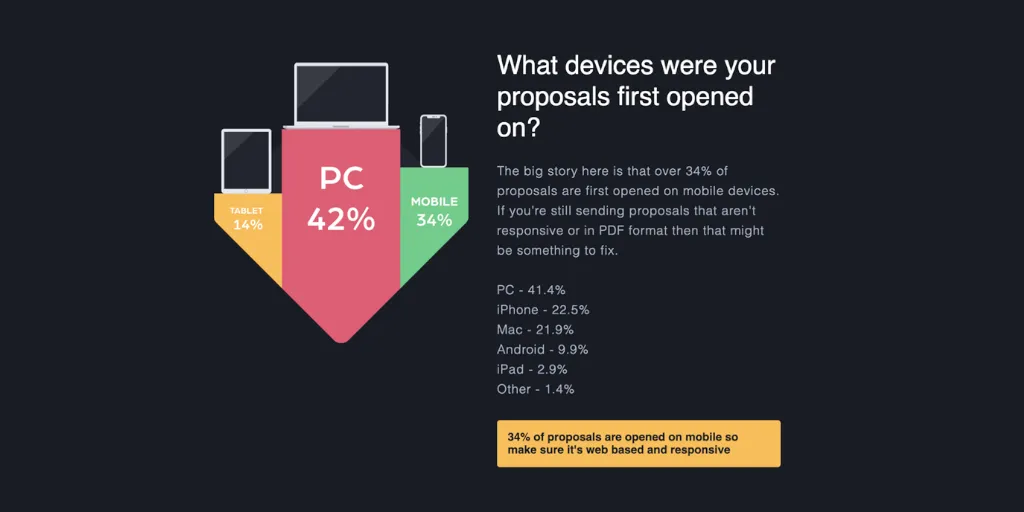
This means one thing for business owners and sales professionals: You need a proposal that is optimized for mobile.
Business proposal finding #7: It doesn’t matter when you send your proposal
Lots of studies and research suggests that Tuesdays are the best day to send emails. We wanted to see if there was a similar pattern with business proposals.
As it turns out, there isn’t.
Our research showed that the day and time you send your business proposal doesn’t significantly improve or hurt your chances of getting a signature.
Well, we did spot a couple of minor trends.
According to our study, you’re 0.9% more likely to get a conversion on a Monday than any other day of the week. And, if you want your proposal signed asap, do not send it on a Friday! Proposals sent on Friday take over a day to get signed. Presumably, because people prefer to leave it for Monday.
Business proposal finding #8: Clients love paying directly from the proposal
Traditionally, if a client was happy with your proposal, they would sign it and give you the green light to get started. You would then send them an invoice and they would pay it, at some point.
A lot of business proposal payments are still made in this way, but the percentage is decreasing every year.
Our research shows that last year, over 52% of proposals were paid directly from our app.
This percentage is increasing each year.
Why?
Well, not only is it more efficient for the client to pay directly instead of chasing invoices, it also makes sure that you, the proposal sender, get paid quicker.
Once you get the proposal signed, your biggest worries are gone!
Not convinced?
We found that if a client pays you directly, thorough proposal software, it takes, on average 12 hours for the money to reach your account. The average invoice takes a whopping 90 days to get paid.
Business proposal finding #9: Length matters
If a business proposal is too short, it might not contain all the necessary details. If a business proposal is too long, the client may lose interest before they get to the end.
According to our report, the ideal proposal length is 6 pages, and there are eight sections that you must include in your business proposal if you want the highest possible conversion rate:
- Introduction
- Detailed specification
- Timeline
- Proof
- Pricing
- Guarantee
- Terms and conditions
- The next steps
We’ve written over 100 different proposal templates for many different industries, and they all included the above eight sections.
Business proposal finding #10: The title of the pricing section makes a difference
Words are powerful tools. They can make or break an ad, email, or marketing campaign. Ask any good copywriter.
This applies to business proposals too, particularly in the pricing section.
Words such as ‘cost’, ‘price’, and ‘fees’ signal to the client that they will end up spending money, not making it.
Words like ‘investment’, ‘asset’, or ‘venture’ however, make clients tick! Use these types of words in your pricing title and pricing section.
You want them to consider your service or product as an investment. Something that will pay off, rather than become a cost that they’ll never get back.
It’s a small psychological trick, but it makes a big impact.
Business proposal finding #11: Act quickly
According to our research, if you send a business proposal within 24 hours of making contact with a client, you’re likely to see a 25.9% conversion rate and it’s likely to take the client an average of 6 days to sign the proposal.
On the other hand, if you send the proposal within the first 48 hours, the likelihood of your client signing it will increase by only 7.6%, and it will take them around 10 days to sign it.
Data has shown that with each additional day that companies take to send the proposal, the conversion rate declines.
When it comes to signing the document, the results are not as convincing; there is no sharp increase in the number of days it takes a client to sign. However, it’s evident that proposals sent within the first 24 hours are likely to be signed quicker.
Business proposal finding #12: Use a template
As you can see, there are many different elements to consider when creating a business proposal. This can often make the process of creating one time consuming and prone to human error. When you’re juggling a million tasks and have a to-do list a mile long, it’s all too easy to miss or forget to include something crucial in your business proposal.
This can result in an immediate rejection or irreparable damage to your reputation.
To give yourself the best chance of success, why not use a business proposal template? Like the below Process Street Proposal Template Checklist Process, for example:
Click here to access the Proposal Template Checklist Process!
How can creating and following a template help you write winning business proposals?
Let me explain by introducing you to Process Street.
Process Street & how it can help you win business proposals
Process Street is superpowered checklists!
It’s state-of-the-art business process management (BPM) software, which allows you to create process-based templates.
If you create and follow a process for the recurring tasks you need to complete, such as writing a business proposal, you can make sure you’re performing these tasks efficiently and to the best of your ability, every single time.
Check this video out, or read this article to find out a little more:
Not only can you assign tasks to your team, set deadlines, and send work for approval, you can also connect your processes to the platforms you use every day via Zapier, webhooks, or API integration. Information can be sent, automatically, between platforms with one click. This removes the error-prone process of manual data input and leaves you more time to focus on crafting a winning business proposal.
Watch this webinar on automation to find out a little more:
Remember: Processes reduce mistakes, save you time, and make you more productive.
Key takeaways: The magic business proposal solution
Unfortunately, there is no magic solution for creating the perfect business proposal.
However, our report has shown that you should consider the following elements when creating your proposal:
- Use a template
- Include a proposal cover
- Use live chat
- Send an online version of the proposal (don’t print)
- Make it 6 pages long
- Cram the word investment into the title
- Send it within 24 hours from contact with the client
Follow this format and you’ll be golden!
We’d love to hear what you think about these findings and also how you create successful business proposals in the comments below. Who knows? You may even get featured in an upcoming article!
